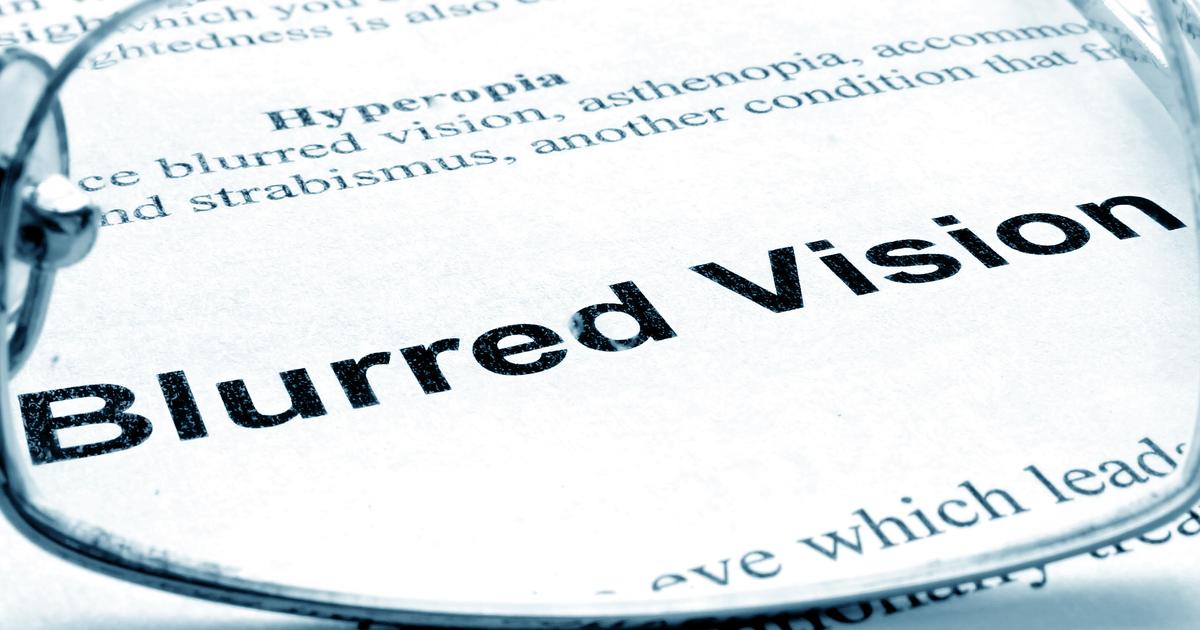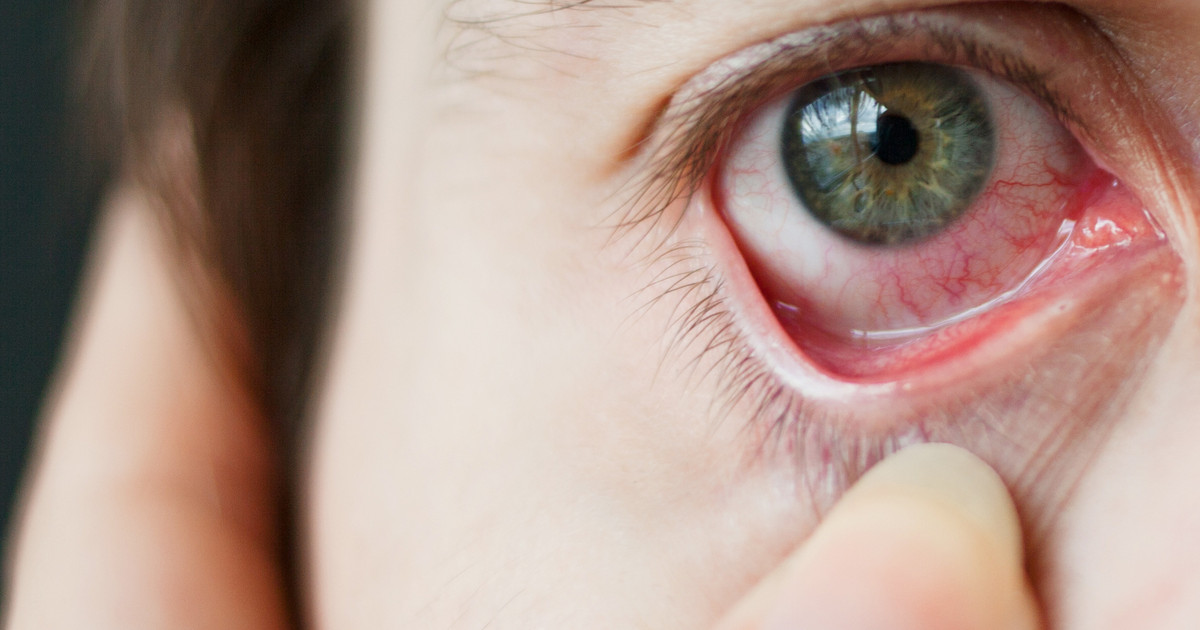Eye Care Warning Signs You Don't Want To Ignore
Perhaps the most beautiful of all the senses is the gift of vision. Being able to see the face of one's children, spouse, family members, and friends is simply amazing. Enjoying the views of Mother Nature's trees, waterfalls, and even majestic mountains are all delightful. What would a world of darkness be like; a world where one had to feel their way around and couldn't see anything but blackness? Too many individuals have lost their vision because they didn't realize the warning signs and get help.
Here are common symptoms and conditions that occur in the eyes that warrant an eye examination. None of them should be ignored!
Pressure Or Pain In The Eyes

One of the most common reasons why individuals may experience pressure or pain in the eyes is to do with their sinuses. The eyes are surrounded by sinus cavities, and when the sinuses fill they will put pressure on the eyes, which may also cause the eyes to run or get a little red. Another issue involved with the eyes that may result in pain or pressure is glaucoma, a condition that occurs when pressure builds up inside the eye. The result is damage to the eye's optic nerve and eventually blindness. Most eye doctors test for this in a routine examination, though it is important for patients to remember to ask, especially if their family has a history of it, as glaucoma is quite serious.
Pain in the eyes can also be caused by headaches. Migraines are especially notorious for causing the eyes to ache. Some individuals even say they can feel a migraine beginning because it starts in the eyes first. Any severe pressure or pain that feels like a stabbing knife or causes vision to be distorted needs to be evaluated right away.
Uncover more eye care warning signs and the treatments that can reverse them.
Floaters

The eye is about eighty percent full of a gel-like substance called the vitreous. This gel helps the eye maintain its nice round shape. However over time, the gel begins to slowly shrink, and as this substance begins to shrink, it will make strings and dots (floaters) that will cast a shadow onto the retina. They are completely harmless if they are caused by the vitreous, but only a doctor can determine if it is a benign floater or other problem.
While floaters caused by gel-like substances are not a sight-threatening condition, a retinal tear, which can cause a similar effect, is. Consequently, many with floaters caused by retina tears warn of increased floaters in a short period, or even some darkness in their vision, which is why floaters need to be evaluated. They can be serious and not a floater at all but rather a tear. The spots and strings seen may also be caused by a bleed in the eye. Blood can get into the vitreous and cause the strings and dots thought to be floaters. However, it can be blood vessels leaking down into the eyes. This is equally a dangerous problem and needs to be addressed.
Keep reading to learn more about what warning signs related to the eyes everyone should pay attention to now.
Flashing Lights

Flashing lights sometimes accompany floaters in the eyes. It can be as simple as some light reflecting off the vitreous, which has begun to break down. Some individuals who have seizure disorders often see flashes of light before a seizure occurs. This is called an aura, a phenomenon that happens to give the patient a warning something is about to happen. Those who have epilepsy may see this each time before a seizure, or they may not experience them at all. If there is trauma to the brain in any way, it is not uncommon to see these flashing lights too.
Another problem often behind flashes of light is a stroke. Many stroke patients state that they see flashing or zigzag lines in their vision field before the stroke. Again, it is a warning sign something is not right. It is hard to determine if the flashes of light are harmless or cause for concern. The best thing to do is to contact a doctor and have them evaluate the flashes.
Read more about serious eye care warning signs now.
Blurry Vision

There are quite a lot of reasons why an individual's vision might be blurry. However, the most common form of blurry vision is what comes with the need for corrective lenses. When someone experiences blurry vision, along with conditions like nearsightedness or farsightedness, they will often need to have their eyes examined and fitted with a prescription for contacts or glasses so their vision can be appropriately corrected. Diabetes can also cause an individual's vision to blur if they have high blood sugar. Unfortunately, diabetes quite commonly causes blindness. If an individual has diabetes and their vision is blurred, this is a good indication their blood sugar is not being controlled properly. It is also a sign an individual with prediabetes is now a full diabetes patient, though only a doctor can make this determination. Migraines and a stroke can also result in blurry vision, so it's important to get sudden, intense, and painful blurry vision checked out as soon as possible.
Get more information on serious warning signs in the eyes to never ignore now.
Sensitivity To Light

Light sensitivity, also called photophobia, can occur by itself or a part of a series of symptoms. Some of the most common reasons for light sensitivity are pink eye, sinus issues, and even headaches. However, several diseases carry light sensitivity as a symptom. Autoimmune conditions such as rheumatoid arthritis and Sjogren's syndrome are known for making the eyes very sensitive. Other conditions to be concerned about are mononucleosis, sarcoidosis, and encephalitis, as they also cause light sensitivity fairly often. A subarachnoid hemorrhage (SAH) is a bleed that takes place in the subarachnoid space, which is where the cerebrospinal fluid circulates. An injury to this area can cause a coma, light sensitivity, paralysis, and even death.
Learn more about vision problems no one should ignore now.
Issues Seeing At Night

An individual may notice they have more trouble than usual with being able to see clearly at night or in poor lighting conditions. Often referred to as nyctalopia, this problem is the result of an individual's eyes having an inability to adjust to low-light conditions properly. Several different problems with an individual's eyes can cause them to have issues seeing at night. Cataracts can cause the light an individual is looking at to become distorted and create halos. An individual who is having issues with seeing at night may have a deficiency of vitamin A or zinc. Vitamin A helps keep an individual's retina in good health but is unable to be utilized by their body for this purpose without enough zinc. An individual who experiences difficulty seeing clearly at night who is under thirty years old may be affected by retinal damage due to a serious genetic disorder referred to as retinitis pigmentosa. A diabetes patient who experiences issues with seeing at night may be affected by diabetic retinopathy and should seek immediate treatment.
Get more information on eye warning signs no one should ignore now.
Red Eyes

Red eye describes when the white of an individual's eye appears red or looks bloodshot. The manifestation of red eyes in an individual that is short-lived and resolves on its own is not concerning. However, an individual who experiences red eyes that do not resolve after a week or occur along with other symptoms may have a more serious underlying eye condition. Infections in different parts of the eye are known to produce persistent red eyes and require medical treatment to avoid permanent damage to the affected structures. Red eyes that do not resolve following any kind of injury or trauma to an affected individual's eye require urgent medical treatment to ensure there is not a bleed in the eye. Acute glaucoma or the rapid increase of internal pressure of the eye can also produce red eyes in an individual. This is often accompanied by pain and needs emergency treatment to prevent further vision loss. Other causes of red eyes can include bleeding disorders, rheumatoid arthritis, scleritis, and contact lens overuse.
Uncover another vision issue that requires attention now.
Unusually Teary Eyes

A healthy individual experiences teary eyes or watery eyes in response to environmental factors and irritants because it is a mechanism used to keep foreign particles out of the eyes and keep the eyes healthy. However, teary or watery eyes that are disruptive to everyday activities and constant are not a normal response. Unusually teary eyes can be the result of an overproduction of tears by the ducts in the eyes because of an injury or structural abnormality. Ectropion is a term used to describe when an individual's lower eyelid turns outward and produces abnormally teary eyes. An individual who has abnormally watery eyes may be affected by trichiasis, a condition where the eyelashes grow inward toward the eye instead of out and away from the eye. Other serious causes of unusually teary eyes include keratitis, corneal ulcers, Bell's palsy, and Meibomian glands. It is important to seek treatment for conditions that cause abnormally teary eyes because many of them have the potential to produce permanent vision damage when left untreated.
Learn more about vision problems requiring rapt attention now.
Faded Colors

An individual who is affected by certain eye conditions may experience the manifestation of faded colors in their vision. Faded color in the visual field refers to when an individual has a decreased ability to distinguish one color from another. Faded colors are often a sign of cataracts, which is the development of a cloudy film in the lens of the eye. Cataracts develop when an injury or the natural process of aging causes alterations in the tissue that makes up the lens of an individual's eye. Faded colors in the vision should not be ignored when caused by cataracts because of the danger declining vision poses when an individual is driving a vehicle, operating machinery, and performing other tasks. Other serious but rare causes of faded colors in an individual's vision that may not be isolated to the eye include sickle cell anemia, macular degeneration, multiple sclerosis, Parkinson's disease, leukemia, diabetes, Alzheimer's disease, and glaucoma.
Reveal additional vision issues now.
Blank Spots In Central Vision

An individual who has blank spots in their central vision or what is commonly referred to as floaters should seek care from their ophthalmologist. Floaters are spots or shadows that appear in an individual's field of vision. Blank spots in the central vision can be a variety of different shapes and sizes. The blank spots in an affected individual's vision can be very bright, very dark, flickering, or blurry. Floaters in the central vision may make it difficult for the affected individual to make out certain colors. Some individuals affected by blank spots require a bright source of light to see clearly. It is normal for an individual to see floaters in their vision every once in a while, but a sudden increase in the frequency of floaters can indicate a serious underlying condition. Blank spots in an individual's vision can indicate damage has occurred in the retina, they are bleeding inside of the eye, the onset of a stroke, the presence of a tumor, glaucoma, optic nerve damage, or vitreous inflammation.
